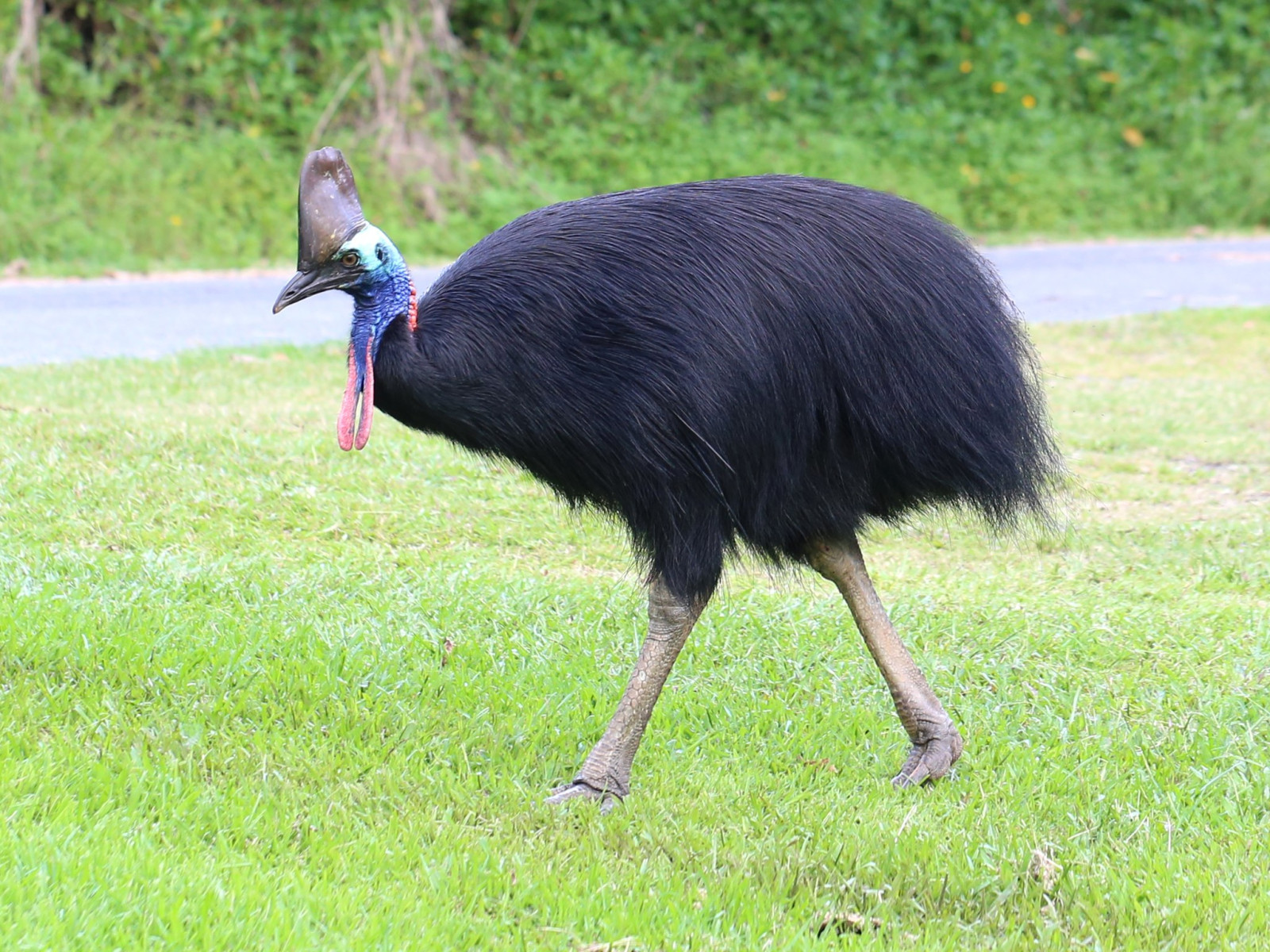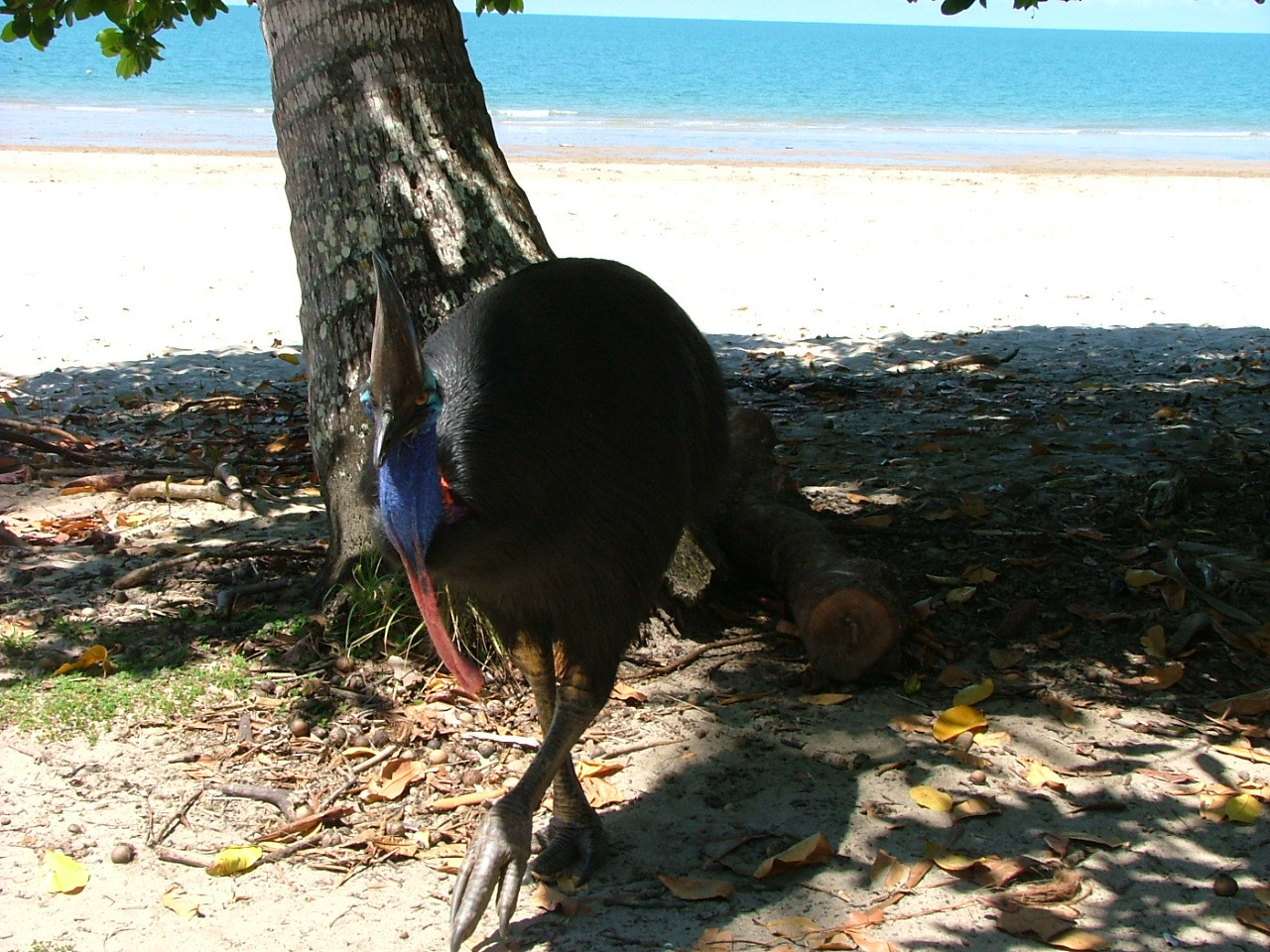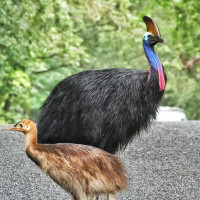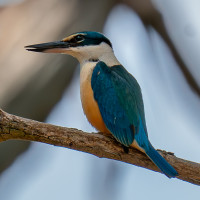Opis
Etty Bay is a popular locals beach. The soft white-sand beach is backed by a narrow, tree-shaded reserve, then steep, forested slopes rising up to 250 m behind the beach. Etty Bay is one of the best places in Queensland to see the famous Southern Cassowary. You can see this giant bird patrolling the area most days with sights more common during the early morning and late afternoon. Park up by the beach and head to the small wooded area to your right. Quietly walk through this wood or along the beach looking in to the undergrowth. If you have been unlucky at the wood to the right of the beach, then head left to the more dense woodland up from the beach. If you visit late afternoon and hang around at the beach you will also likely see them wander along the sand itself.
Of course because of the surrounding woods, beach and sea you can observe plenty of other birds. For example Torresian Imperial-Pigeon, Masked Lapwing, Forest Kingfisher, Rainbow Bee-eater, Yellow-spotted Honeyeater, Australasian Figbird and many more, see the birdlist below. But the reason to visit this spot and why Etty Bay has an A-status is definitely the Southern Cassowary.
Szczegóły
Dostęp
Etty Bay is just over 100 km south of Cairns and takes about 1.5 hours to drive to. Alternatively, you can go from Mission Beach which is 50 km away and takes 45 minutes to drive to. Click on the P in the map for directions or coordinates.
Teren i siedlisko
Las , Plaża , MorzeWarunki
PagórkowatyTrasa dookoła
TakCzy luneta będzie przydatna ?
NieUdany sezon obserwacyjny
Przez cały rokNajlepszy czas na wizytę
WiosnaTrasa
Szeroka ścieżka , Wąski szlakPoziom trudności szlaku pieszego
ŁatwyDostępne
PieszoCzatownia/platforma obserwacyjna
NieLinki
- Photo Southern Cassowary on the grass at Etty Bay by Summerdrought, via Wikimedia Commons
- Photo Southern Cassowary on the beach at Etty Bay by Licualawinq1, via Wikimedia Commons




 by Charles J. Sharp, CC BY-SA 4.0 httpscreativecommons.orglicensesby-sa4.0, via Wikimedia Commons.jpg)